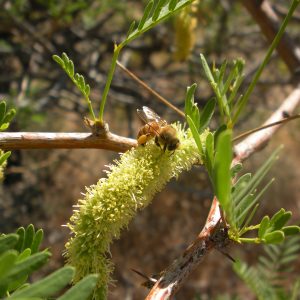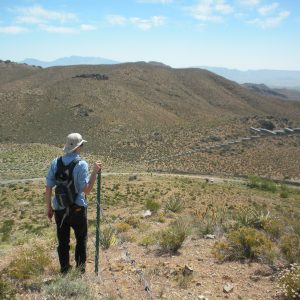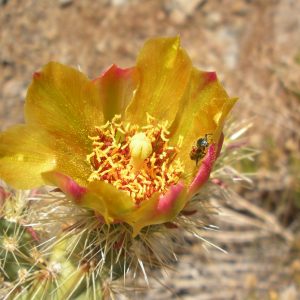From the bustle of the Chicago suburbs to the quiet, slow-paced town of Needles, CA, my first weeks of the CLM internship have been a period of great adjustment. I’m glad to finally be away from the fast-paced days of Gurnee summers that are choked by traffic from the Six Flags amusement park and the mall. Though not much goes on in close proximity to my residence, I enjoy my work with the Needles field office greatly. My adviser Tom Stewart has been very helpful with my adjustment to the extreme temperatures and with navigating the region. I am only beginning to get used to the temperatures that exceed 100 degrees Fahrenheit on a sunny, summer day. A strategy to combat the summer heat has been starting work early. My field work is done before the afternoon hours.
What I love about the field work is the many lizards I can see dashing across the rocky terrain, the Joshua trees that I had only seen in photographs and the dry climate. I don’t mind warm weather, but extreme humidity has always bothered me. Though it is not work-related, I also love the cheapness of produce at some stores in the region. I have bragged to friends and family about the affordability of avocados, grapes and strawberries. The only scary part of the work is the threat of rattlesnake bites. Though I have yet to hear that fear-inducing rattle, I have made myself a promise to not listen to an iPod while collecting so that I do not foolishly stumble across an angry rattlesnake.
As far as work goes, most of my time thus far has been spent collecting seeds for SOS from key plant species such as white bursage, creosote, indian ricegrass, big galleta and more. Proper and efficient seed collection from desert plants is a new skill that I am developing. Luckily I spent a great deal of time with flora and fauna identification in college; thus, my understanding of desert wildlife is rapidly expanding. I hope that my seed collecting can help to preserve plant species that are at risk due to pests, grazing animals, invasive species, pollution and other causes. Some seeds are extremely easy to collect (white bursage) but some can be very time-consuming (creosote). I have noticed that my first days of seed collection were awkward and confusing. Since my most recent field work, I can confidently say that my skills are improving.
I am also using GPS to mark good locations for seed collection as well as animals that are spotted. I found two desert tortoises (endangered species) on the same morning on my way to a desert spring. Some employees at the office say that they have only seen one tortoise after years of working in the field! Photographs of anything that catches my eye are taken at my leisure.
I am on the verge of working with water source management, bat surveys and other projects in the near future. Until then, I will see you fellow interns at the Grand Canyon.
Kudos.
– Eric Clifton





